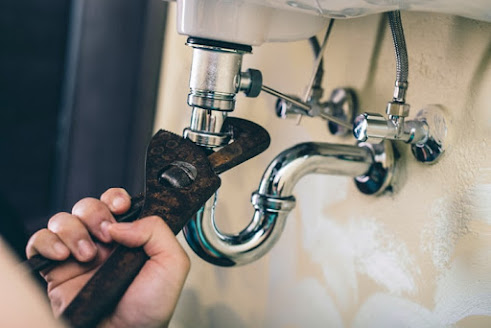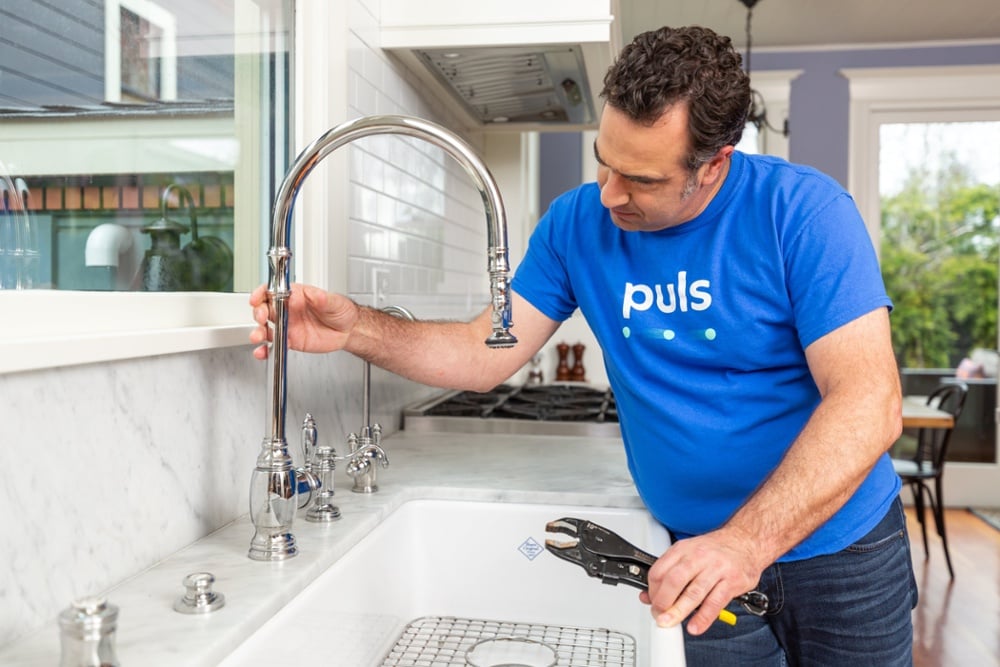How do you actually feel in relation to Diagnose Unwanted Plumbing Noises?

To detect loud plumbing, it is necessary to identify very first whether the unwanted noises take place on the system's inlet side-in other words, when water is turned on-or on the drainpipe side. Noises on the inlet side have actually varied reasons: extreme water pressure, used valve and also faucet components, improperly attached pumps or other devices, incorrectly positioned pipe bolts, and also plumbing runs including too many tight bends or various other restrictions. Noises on the drainpipe side usually come from bad area or, as with some inlet side noise, a format having tight bends.
Hissing
Hissing noise that happens when a faucet is opened somewhat usually signals too much water pressure. Consult your regional water company if you presume this trouble; it will certainly have the ability to inform you the water pressure in your area as well as can set up a pressurereducing valve on the inbound water supply pipeline if essential.
Various Other Inlet Side Noises
Squeaking, squeaking, scraping, breaking, and touching usually are triggered by the development or tightening of pipelines, usually copper ones providing warm water. The noises happen as the pipes slide against loose bolts or strike neighboring home framing. You can typically identify the location of the trouble if the pipelines are exposed; simply adhere to the audio when the pipes are making sounds. Probably you will find a loose pipe hanger or an area where pipes lie so close to floor joists or other mounting items that they clatter against them. Attaching foam pipe insulation around the pipes at the point of call ought to correct the problem. Be sure bands and also wall mounts are protected and also supply appropriate support. Where possible, pipeline bolts should be connected to massive structural aspects such as structure wall surfaces as opposed to to mounting; doing so decreases the transmission of vibrations from plumbing to surfaces that can amplify and transfer them. If attaching fasteners to framing is unavoidable, cover pipelines with insulation or various other durable material where they get in touch with fasteners, and sandwich completions of brand-new fasteners between rubber washing machines when mounting them.
Dealing with plumbing runs that deal with flow-restricting tight or numerous bends is a last resort that must be carried out just after seeking advice from an experienced plumbing service provider. Sadly, this circumstance is rather common in older homes that might not have been built with indoor plumbing or that have actually seen numerous remodels, particularly by beginners.
Babbling or Screeching
Extreme chattering or screeching that occurs when a shutoff or tap is turned on, which usually goes away when the fitting is opened fully, signals loosened or malfunctioning internal components. The remedy is to change the valve or faucet with a brand-new one.
Pumps as well as devices such as washing makers and also dishwashers can move motor noise to pipelines if they are improperly connected. Connect such things to plumbing with plastic or rubber hoses-never rigid pipe-to isolate them.
Drain Sound
On the drainpipe side of plumbing, the chief objectives are to remove surfaces that can be struck by falling or rushing water and to protect pipes to consist of unavoidable audios.
In new construction, bath tubs, shower stalls, commodes, and wallmounted sinks and also basins should be set on or versus resilient underlayments to minimize the transmission of audio with them. Water-saving commodes and faucets are much less noisy than standard models; mount them rather than older types even if codes in your area still permit making use of older fixtures.
Drainpipes that do not run vertically to the basement or that branch right into straight pipe runs sustained at flooring joists or various other mounting existing particularly bothersome noise issues. Such pipelines are large sufficient to emit significant resonance; they additionally lug significant quantities of water, which makes the circumstance worse. In new building, define cast-iron dirt pipes (the large pipelines that drain commodes) if you can afford them. Their enormity contains a lot of the sound made by water going through them. Likewise, avoid transmitting drains in walls shown to bed rooms as well as areas where individuals gather. Wall surfaces consisting of drainpipes must be soundproofed as was described earlier, utilizing double panels of sound-insulating fiber board and wallboard. Pipes themselves can be covered with special fiberglass insulation produced the objective; such pipes have a resistant vinyl skin (in some cases consisting of lead). Results are not always sufficient.
Thudding
Thudding sound, commonly accompanied by shivering pipelines, when a tap or appliance shutoff is shut off is a problem called water hammer. The sound and also vibration are brought on by the resounding wave of pressure in the water, which unexpectedly has no area to go. Often opening a shutoff that discharges water quickly right into an area of piping including a restriction, joint, or tee fitting can create the very same condition.
Water hammer can normally be healed by installing fittings called air chambers or shock absorbers in the plumbing to which the problem valves or taps are linked. These devices permit the shock wave produced by the halted circulation of water to dissipate in the air they have, which (unlike water) is compressible.
Older plumbing systems may have brief vertical areas of capped pipe behind walls on tap runs for the exact same objective; these can ultimately loaded with water, reducing or ruining their efficiency. The treatment is to drain pipes the water system entirely by shutting off the primary water supply valve as well as opening all taps. After that open up the major supply shutoff and close the faucets one at a time, starting with the faucet nearest the valve and finishing with the one farthest away.
WHY IS MY PLUMBING MAKING SO MUCH NOISE?
This noise indeed sounds like someone is banging a hammer against your pipes! It happens when a faucet is opened, allowed to run for a bit, then quickly shut — causing the rushing water to slam against the shut-off valve.
To remedy this, you’ll need to check and refill your air chamber. Air chambers are filled with — you guessed it — air and help absorb the shock of moving water (that comes to a sudden stop). Over time, these chambers can fill with water, making them less effective.
You’ll want to turn off your home’s water supply, then open ALL faucets (from the bathroom sink to outdoor hose bib) to drain your pipes. Then, turn the water back on and hopefully the noise stops! If you’re still hearing the sound, give us a call to examine further.
Whistles
Whistling sounds can be frustrating, as sometimes the source isn’t easily identified. However, if you can pinpoint which faucet or valve that may be the cause, you’ll likely encounter a worn gasket or washer — an easy fix if you replace the worn parts!Whistling sounds from elsewhere can mean a number of things — from high water pressure to mineral deposits. Your best plan of attack here is to give our plumbing experts a call. We’ll be able to determine where the noise is coming from and what the cause may be, then recommend an effective fix!
Cracks or Ticks
Cracking or ticking typically comes from hot water going through cold, copper pipes. This causes the copper to expand resulting in a cracking or ticking sound. Once the pipes stop expanding, the noise should stop as well.
Pro tip: you may want to lower the temperature of your water heater to see if that helps lessen the sound, or wrapping the pipe in insulation can also help muffle the noise.
Bangs
Bangs typically come from water pressure that’s too high. To test for high water pressure, get a pressure gauge and attach it to your faucet. Water pressure should be no higher than 80 psi (pounds per square inch) and also no lower than 40 psi. If you find a number greater than 80 psi, then you’ve found your problem!
Next step is to give us a call in order to install a pressure regulator. Trust us, you don’t want to wait to resolve this issue. Not only is the sound annoying, but high water pressure can be destructive to your home — including damaging certain appliances, like your washer and dishwasher.
Dripping
You might be accustom to the slow quiet drip your kitchen faucet makes. You might have even tuned out your bathroom sink dripping and drabbing all day long — but it’s time to find its cause.
A slow drip could signify a variety of easy to fix issues, such as a worn out O ring, or loose part. And by ignoring the drip, you could be wasting up to 2,000 gallons of water a year! So start conserving water — get it looked at ASAP.
https://www.pwessig.com/blog/2018/december/why-is-my-plumbing-making-so-much-noise-/

We had been shown that article about Why Your Water Pipes Are Noisy and How To Shut Them Up from a good friend on our other blog. Liked our content? Please share it. Help somebody else locate it. We thank you for reading our article about Diagnose Unwanted Plumbing Noises.
Immediate plumbing assistance for emergencies.
Comments on “Understanding Plumbing Sounds: A Guide To Fixing Them in Your Residence”